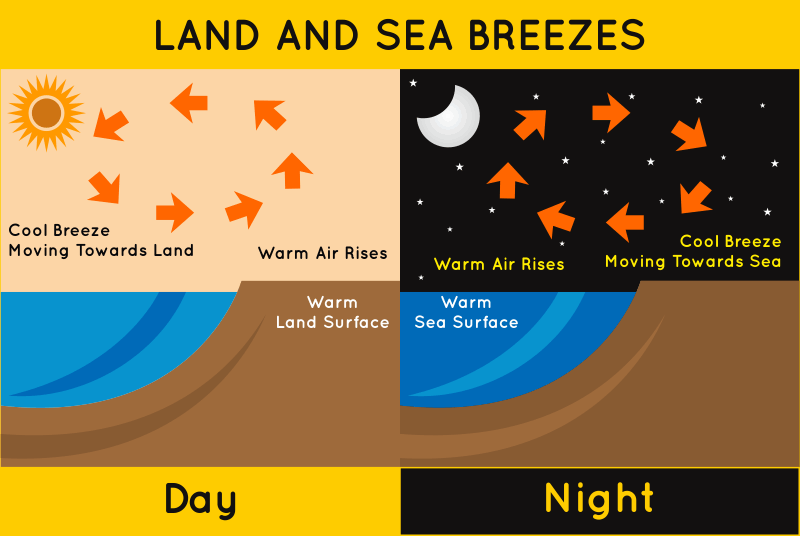Periodic wind(part 1)
PERIODIC WINDS
Land and sea breezes and monsoon winds are winds of a periodic type. Land and sea breezes occur daily, whereas the occurrence of monsoon winds is seasonal.
Types of periodic winds:
(a) Monsoon winds
(b) Land and Sea Breeze
(c) Mountain and Valley Breeze
(a) MONSOON WINDS
Monsoons are regional scale wind systems that predictably change direction with the
passing of the seasons. These wind systems are created by the temperature contrasts that exist between the surfaces of land and ocean.
However, monsoons are different from land and sea breezes both spatially and temporally. Monsoons occur over distances of thousands of kilometers.
Their two dominant patterns of wind flow act over an annual time scale.
Summer Monsoon
During the summer, monsoon winds blow from the cooler ocean surfaces onto the warmer
continents.
In the summer, the continents become much warmer than the oceans because of a
number of factors.
These factors include:
(i) Specific heat differences between land and water.
(ii) Greater evaporation over water surfaces.
(iii) Subsurface mixing in ocean basins, which redistributes heat energy through a deeper
layer.
Winter Monsoon
In the winter, the wind patterns reverses, as the ocean surfaces are now warmer. With little solar energy available, the continents begin cooling rapidly as longwave radiation is emitted to space. The ocean surface retains its heat energy longer because of water's high specific heat and subsurface mixing. The winter monsoons bring clear dry weather and winds that flow from land to sea.
(b) LAND AND SEA BREEZES:

A land breeze is created when the land is cooler than the water such as at night and the
surface winds have to be very light. When this happens the air over the water slowly begins to rise, as the air begins to rise, the air over the surface of the ocean has to be replaced, this is done by drawing the air from the land over the water.
A sea breeze is created when the surface of the land is heated sufficiently to start rising of the air. As air rises, it is replaced by air from the sea.
Sea breezes tend to be much stronger and can produce gusty winds as the sun can heat the land to very warm temperatures, thereby creating a significant temperature contrast to the water.
No comments:
Post a Comment